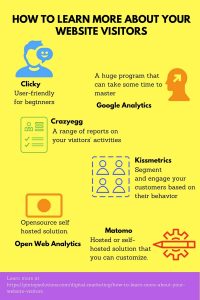— July 11, 2019
There is no doubt that technology has significantly advanced in the last few decades, creating more efficient business operations around the world. In fact, the finance function is widely regarded to have been the first major area that technology sought to revolutionize. This advancement helped set the operational landscape of an organization’s finance team, making it unrecognizable now compared to thirty years ago. Finance automation has played a big part in this.
But more work can, and must, be done to keep pace with a constantly changing technological backdrop. There are still major opportunities for the finance function to better use advances in technology in 2019 and beyond. And a major part of this involves tightening up your approvals processes.
The vast majority of sizable organizations now have some form of finance system or software in place of varying capability and scope. However, there remains a big gap in terms of how the approvals process is managed, as this is an area not generally covered by traditional accounting software.
Due to the sheer volume of data that flows through the average finance team, much work is needed, not just to input this data to a system, but to check, code, and approve it, too. Let’s take a look at the top areas you could make efficiency savings by automating approvals.
Budget and CapEx requests
For a final budget to be implemented, a number of sign offs need to take place at varying degrees of manager seniority, usually related to the monetary amount in question. It is a similar scenario with CapEx (capital expenditure) requests, which are often particularly high value, and therefore require multiple approvals. Letting automation handle this process has a number of benefits.
First, you are able to clearly define the specific stages or authorization levels the budget or CapEx request must pass through to be fully approved. This saves enormous time upfront and means that the request is more likely to quickly and efficiently move through the authorization flow.
What’s more, each authorizer will see the key information relating to the request on screen, including any previous queries that have already been addressed. Thus, they are more likely to approve it quickly and confidently. This will minimize potential blockages in the system that can cause significant delays, as well as wasted time and money searching for missing information.
Employee reimbursements
There are a number of items that a staff member might need monetary reimbursement for, from travel undertaken for business reasons, to general expenses, or even potential salary advances. Managing such requests and getting them approved and paid can be a notoriously time-consuming and error-prone process. Inevitably, some employees may be unclear on the reimbursement rules and subsequently make incorrect claims. Further, managers could be equally unsure of the related policies in terms of what they can and cannot approve. There is also the potential of not seeing timely authorization as critical, leading to inevitable hold-ups.
Automation can change all of this by building clear parameters into the systems to support employees and line managers to understand what is and what is not claimable, with drop down options and automatic claim rejection where necessary. It can also speed up the process significantly, meaning that employees receive their reimbursements more quickly and are less likely to be dissatisfied and demotivated by lengthy periods of time waiting to get their money back.
Write off management
By writing off expenses incurred on equipment used to operate their business, organizations can subtract them from their annual revenue, and therefore their taxable income. Manually dealing with the write off of assets, bad debts, and inventory can not only take up valuable time of finance personnel but can also lead to inaccuracies and inconsistencies. This can have a serious impact on the end-of-year accounting procedures. Allowing automation to handle business write-offs means that you can apply pre-defined and consistent formulas to write-offs, as well as establish the levels of senior approval that are needed.
Look outside your traditional accounting software
Your finance team undoubtedly could not live without its system to manage the day-to-day functions. There are probably multiple features that your traditional accounting software does not offer. Therefore, great opportunities exist to streamline some of these activities for even greater efficiency.
Check out this intuitive finance management guide for further ideas on gaining greater time and efficiencies across your finance function. Shop around the market to ensure you are fully up-to-date with all that finance technology can offer your business. Finally, learn why finance automation is the smart choice for organizations seeking to further streamline and improve the running of their finance function.
Business & Finance Articles on Business 2 Community
(51)






